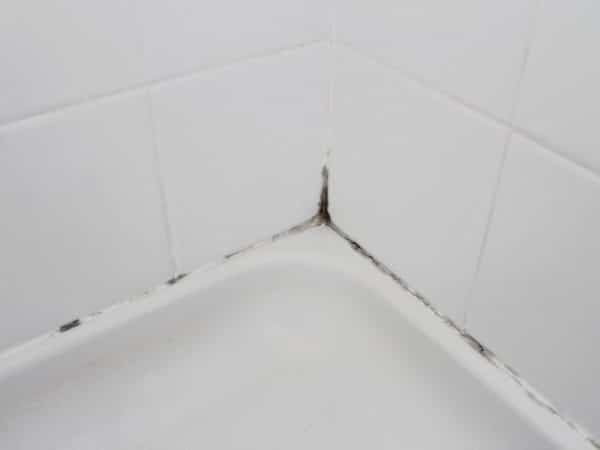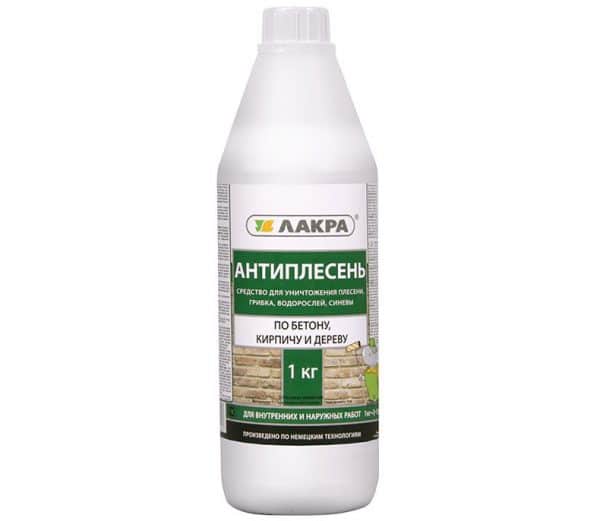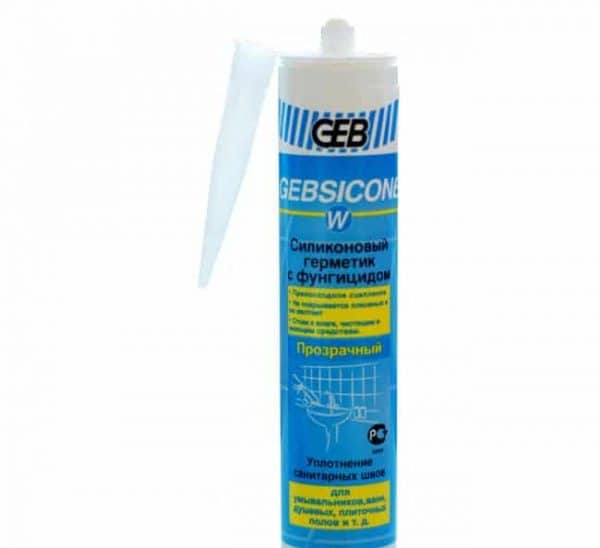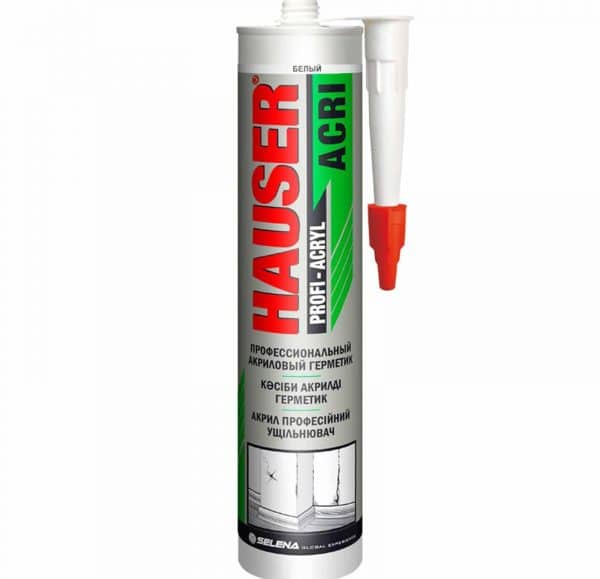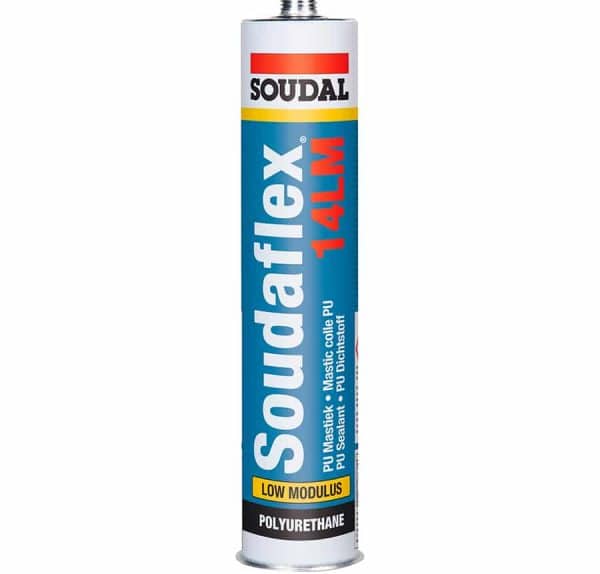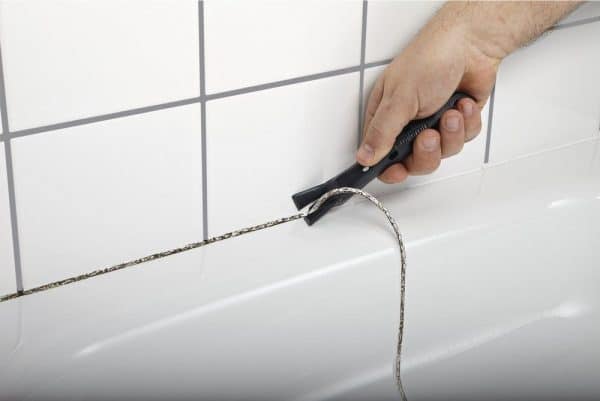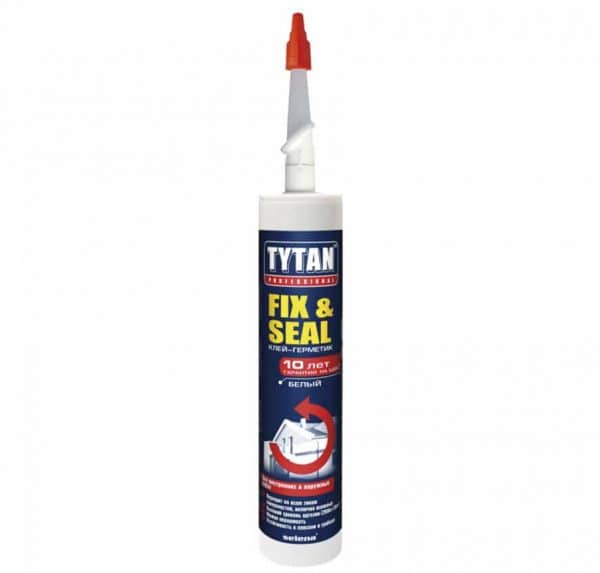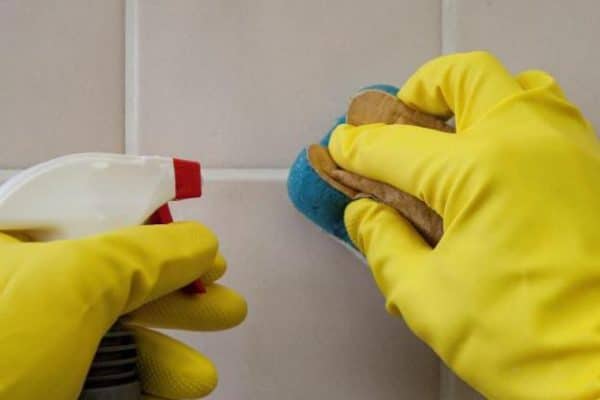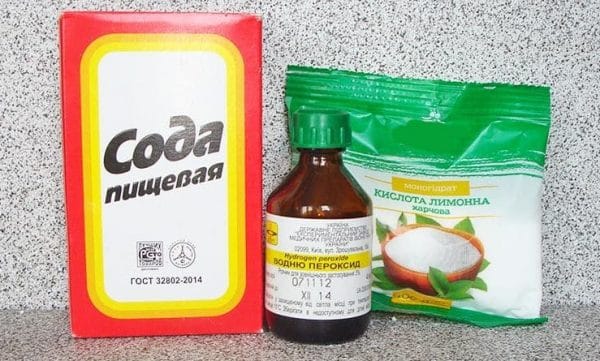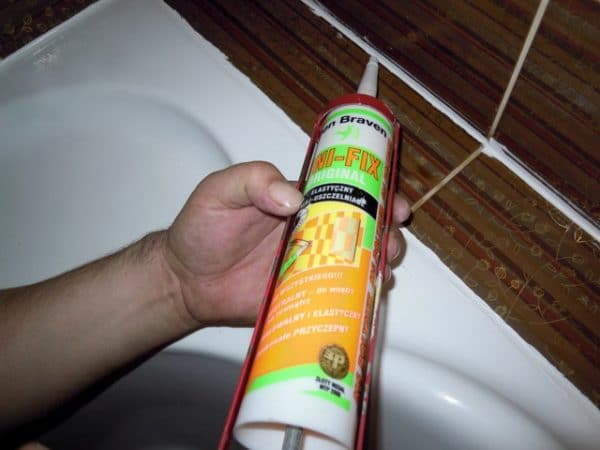Silicone and other types of sealants are indispensable for the bathroom: they are useful when installing plumbing, conducting various kinds of repair work. Such products have strong moisture repellent properties, therefore, they protect surfaces from moisture. There is also a special sealant for fungus - a material that includes fungicidal additives, which not only helps to remove mold, but also prevents its re-occurrence.
- Causes of mold
- Choosing a good sealant
- Antifungal bath sealants
- Silicone sealants
- Acrylic Sealants
- Acrylic Silicone Sealants
- Polyurethane Sealants
- Preparatory work
- Materials and Tools
- How to apply sealant
- Manufacturers and names of sealants
- What to do if mold returns
- Folk remedies for mold
- Mildew Prevention
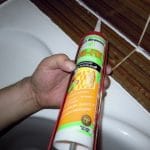
Causes of mold
Black mold is a common nuisance in the bathroom. This microorganism belongs to fungi, spreads around the house through spores - microscopic particles that freely fly through the rooms. Most often, foci of mold appear next to the bathtub, shower, in the seams, between the wall and plumbing - where moisture regularly accumulates. Without emergency measures, mold spores can enter other rooms and appear on windows, in the kitchen and in other humid places. They are inhaled by a person, causing harm to his health, causing lung diseases and allergies.
The main reason that the walls in the bathroom are becoming moldy is excessive moisture. Especially favorable conditions for mold are created by leaking taps, wet laundry, and the lack of regular ventilation of the room. If there is no good ventilation, mushrooms multiply even more actively. Additional risk factors for mold development are:
- poorly insulated, freezing walls;
- insufficient sealing of joints between tiles, panels;
- low quality of finishing materials;
- lack of sunlight (UV rays kill mold).
Choosing a good sealant
To get rid of mold, you need to purchase a high-quality antifungal sealant. The best material is necessarily waterproof, reliable and has sufficient adhesion to many types of substrates. Means with antifungal impregnation such as "Anti-mold" quickly block the reproduction of harmful fungi and serve to prevent the return of the problem.
Among other things, when buying, you must take into account the color of the sealant: it must match the tone of the tile, plumbing, or be colorless. At home, household compositions are most often used, and specialists prefer to use professional ones. The difference lies in the effectiveness and concentration of fungicides, so if possible it is better to purchase more expensive, but high-quality products.
to contents ↑Antifungal bath sealants
A quality sealant against mold cannot be dispensed with if the old putty for the seams has turned black, spots and stripes of dark color have appeared on it. For the bathroom, silicone and acrylic based sealants, as well as combined formulations, are available.
Silicone sealants
Such tools are the most popular for sealing joints in the bathroom. They are available in two variations - neutral and acid.Neutral sealants have chemical stability, do not participate in reactions with materials, the atmosphere of the room. They are highly elastic, stretch due to the flexibility that rubber gives them in the composition. Most neutral sealants contain fungicidal mildew additives.
The second type of silicone based sealant is acidic. They are inexpensive, but some of their properties do not contribute to a long and efficient service. Acids in the composition can react with materials, so such products are not suitable for all surfaces. The level of their adhesion to glass, metal, acrylic is also lower than that of neutral ones.
Another drawback is the unpleasant vinegar smell. In contact with metal bases there is a risk of oxidation of the latter and damage to their appearance. That is why it is recommended that acidic sealants only process durable plastic, wood, and ceramics. Neutral compositions are usually acquired for sealing metal substrates.
to contents ↑Acrylic Sealants
Mold does not appear on such sealants because they have fungicidal additives. At a price, the compositions are more affordable than silicone, but have slightly different properties. The difference is the lack of sufficient elasticity, as a result of which the sealant hardens and can crack if the base vibrates. Therefore, acrylic sealants are not used where dynamic loads are possible.
Among the acrylic compositions are moisture resistant and non-moisture resistant. The latter are not used in the bathroom, because they are not able to withstand high humidity and direct contact with water. Any acrylic-based sealants are quite resistant to static loads, temperature extremes, but can negatively react to chemicals, aggressive detergents.
Other properties of acrylic sealants are as follows:
- can be operated at temperatures from -25 ... to +80 degrees;
- do not darken, do not fade from the influence of UV rays;
- if necessary, the seam can be bleached, painted, plastered.
Most often, such compositions are used to prevent the appearance of mold between the tiles on the floor, near the toilet, to seal all kinds of cracks and cracks. Due to the low elasticity, the seams will still have to be periodically updated, since a network of microcracks will be visible on them. Joints subject to deformation are strictly not recommended to be sealed with acrylic, as well as joints of dissimilar materials.
to contents ↑Acrylic Silicone Sealants
Both substances are present in the composition of such sealants: acrylic and silicone. They are considered resistant to moisture, temperature extremes, solar radiation, while maintaining elasticity over the entire service life. The products have a high degree of adhesion with most materials used to decorate the bathroom. They are white in color, well suited to tile seams, plumbing, bathtubs and sinks to the wall.
to contents ↑Polyurethane Sealants
Mold can also be removed in the bathroom using polyurethane sealants. They adhere perfectly to any material other than plastic. When applied to plastic products, you will have to use a special deep penetration primer first. Most often, polyurethane compounds are used to seal the joints between the wall and the cast-iron, acrylic bathtub, as well as in places where significant joint thickness is required.
The advantages of such tools are:
- high elasticity, lack of cracking during operation;
- minimum time before polymerization and final solidification;
- increase in volume up to 5-10 times from the original, therefore, low consumption;
- the possibility of operation at -60 ... + 80 degrees, the absence of a negative reaction to temperature changes;
- seam shrinkage, elimination of density loss over time.
to contents ↑The seam can be performed both on horizontal and vertical bases: it will not drain, immediately securely fixed in place.Of the minuses should be called a sharp, unpleasant smell of sealant when applied, which completely disappears after drying. Therefore, it is necessary to work with polyurethane compounds with strict observance of safety measures, although then they become 100% harmless.
Preparatory work
If the joints are sealed after the completion of a new repair, preparation measures are simple. It is necessary to remove all remaining contaminants, building dust, erase stains. The surfaces on which the sealant will be applied directly must be degreased by washing with detergents or rubbing with alcohol or acetone.
When the sealant was previously applied to the joints and seams, first you will have to completely remove the old material. It is especially necessary to act carefully if it turns yellow or begins to turn black: mold has already appeared, and it should be disposed of without a trace. To clean the base using a rubber spatula, clerical knife. Gently separate the edges of the seam from the surface, then tear them off or pick them up with pieces, as it happens. In difficult cases, chemical washings in the form of sprays or softening pastes are used. Some of them are capable of damaging the finishing materials, so first they conduct a test on an inconspicuous area.
to contents ↑Materials and Tools
To independently carry out all the work of sealing joints in the bathroom, you need to prepare a number of tools and supplies in advance:
- gun for sealant (if the product is in the cartridge);
- rubber spatula;
- rags;
- masking tape;
- acetone.
For wide cracks, you can purchase an acrylic or polyurethane compound, for narrow and long cracks, silicone sealant is better. For a small amount of work, buy small packaging tubes. Before installing the cartridges in the cartridges, they cut the tip at an angle of 45 degrees, then attach the cap, as indicated on the package. After they put the sealant in the tool and get to work.
to contents ↑How to apply sealant
The surface on which the sealant layer will be applied must be clean and completely dry. The bathroom is also pre-ventilated well to reduce air humidity. This will improve the adhesion of the sealant to the materials. The edges on which the sealant should not fall are covered with masking tape, but they are removed before the final polymerization of the composition so as not to damage the formed seam.
The sealant is applied by careful manual or mechanized extrusion. The layer is made even, without intermittent areas and accumulations of funds. Sealant stains can be removed by wiping with a rag that was previously moistened with acetone. After completion of the work, leave the room open for a day or for a while until the final polymerization specified in the instructions.
to contents ↑
Manufacturers and names of sealants
There are many sealants on sale that are great for the bathroom. For example, the funds of the Ceresit company are respected among professionals. Its silicone compounds have excellent adhesion properties, are plastic and waterproof, safe for others. Also popular are Turkish sealants manufactured by Siki Fix, characterized by excellent quality and moderate cost.
Here is a list of sealants that you can safely purchase for work at home:
- Tytan Professional Fix Seal. This sealant leads in many quality ratings. It is very resistant to moisture, can easily withstand direct contact with water for a long time. In its composition, the product has powerful fungicidal additives that prevent the growth of mold.
- Ceresit CS 25. This is a silicone-based grout sealant with good adhesion, moisture resistance, tolerance to temperature changes. Sealant “Cerezit” is perfect for all building materials, except metals, it lies on smooth and porous substrates, and can serve as a grout. The product contains an increased amount of antifungal supplements.
- Belinka Belsil Sanitary Acetate.Paste silicone sealant with pronounced anti-mold properties. It perfectly lays on any surface, does not flow, is suitable for all types of seams, creates reliable insulation. It is not washed out during operation and can only be removed mechanically. Ideal for ceramic tiles.
- "The moment of Herment." The tool is created specifically for problematic seams, wide joints, often used in bathrooms. Includes two variations: based on acrylic and silicone. With constant vibration, increased humidity, lack of ventilation, a silicone compound is better. In other cases, you can use acrylic sealant.
- Krass. Universal silicone sealant, characterized by a complete lack of shrinkage of joints. This insulating material boasts high adhesive performance, uniform filling of any joints and seams. The product does not flow on inclined surfaces, has high elasticity, and is suitable for stationary and movable joints. In addition to the presence of anti-mold additives, the sealant is fireproof, heat resistant.
- Dow Corning 7091. Sealant glue is used in difficult cases when it is required to reliably seal joints, to prevent leakage. Typically, this composition is used when installing shower boxes, cabins. It has a high level of adhesion to plastic, metal, ceramics, glass, prevents mold from forming even at the highest humidity and other adverse conditions.
What to do if mold returns
It happens that even after the quality measures taken to get rid of mold and seal all joints and seams, the problem reappears. In this case, you will have to find a breeding ground for the fungus, which, as a rule, is located under the tile, in the deep layers of the seam, where the sealant did not get, or other hard-to-reach places. In such a situation, it is necessary to completely clean the surface of the sealing material as follows:
- take a clerical knife, gently cut silicone or acrylic on both sides of the seam;
- pick up the sealant and pull it out of the groove as a whole, then immediately throw it away;
- clean debris, dirt, dust from the seam with a knife;
- disinfect the problem area with isopropyl alcohol or anti-mildew formulations 2-3 times;
- allow the joint to dry (usually enough days);
- apply sanitary sealant with anti-mold additives again.
Folk remedies for mold
In the fight against mold, all means are good. To save money, many do not buy expensive fungicides in the store, but use proven folk recipes. Here are the most popular:
- Buy a solution of borax (sodium tetraborate). Dilute a glass of the product with 2.5 liters of water, with a toothbrush, treat the surfaces affected by the fungus in the bathroom well. No rinsing is required; it forms a protective film.
- Stir a teaspoon of tea tree oil in a glass of water. Apply the solution to moldy areas, leave for 2 hours, then rinse them.
- Sprinkle all the moldy places with table vinegar (9%), and do not need to dilute it with water. Wash off vinegar after 1 hour with a rag.
- Moisten a foam sponge with water, dip in soda, clean the seams, joints, walls affected by the fungus. You can also rub soda into the base with a stiff brush. After an hour, the product must be washed off.
- Take hydrogen peroxide, treat areas with mold. Thus, you can even whiten the old silicone seams, which darkened from the fungus over time.
Mildew Prevention
In order not to again encounter the growth of mold in the bathroom, even after the sanitary treatment and application of the sealant, a number of preventive measures must be observed. To begin with, it is necessary to equip a high-quality ventilation system, while simultaneously regularly ventilating the room.Otherwise, there will always be high humidity. Dripping taps, leaking gaskets, broken shower heads must be repaired or replaced.
If the walls freeze, you will have to insulate them, otherwise the fungus will again begin to populate the room. To prevent mold from entering the bathroom from neighbors, all cracks, gaps and cracks should be well repaired, and a good antifungal sealant will also come in handy here. These measures will seriously reduce the risk of adverse effects of mold on the human body and the destruction of finishing materials in the bathroom.

